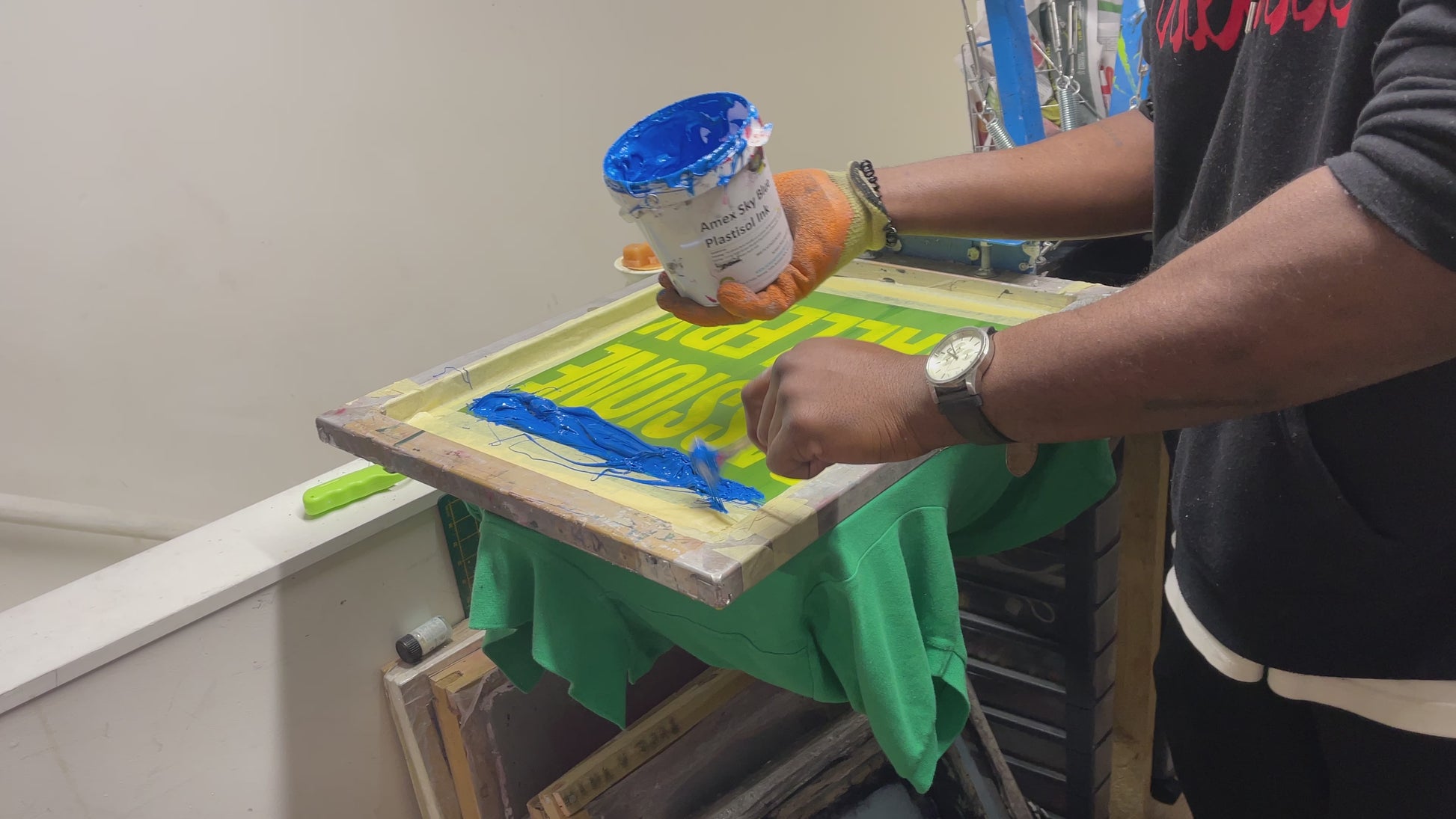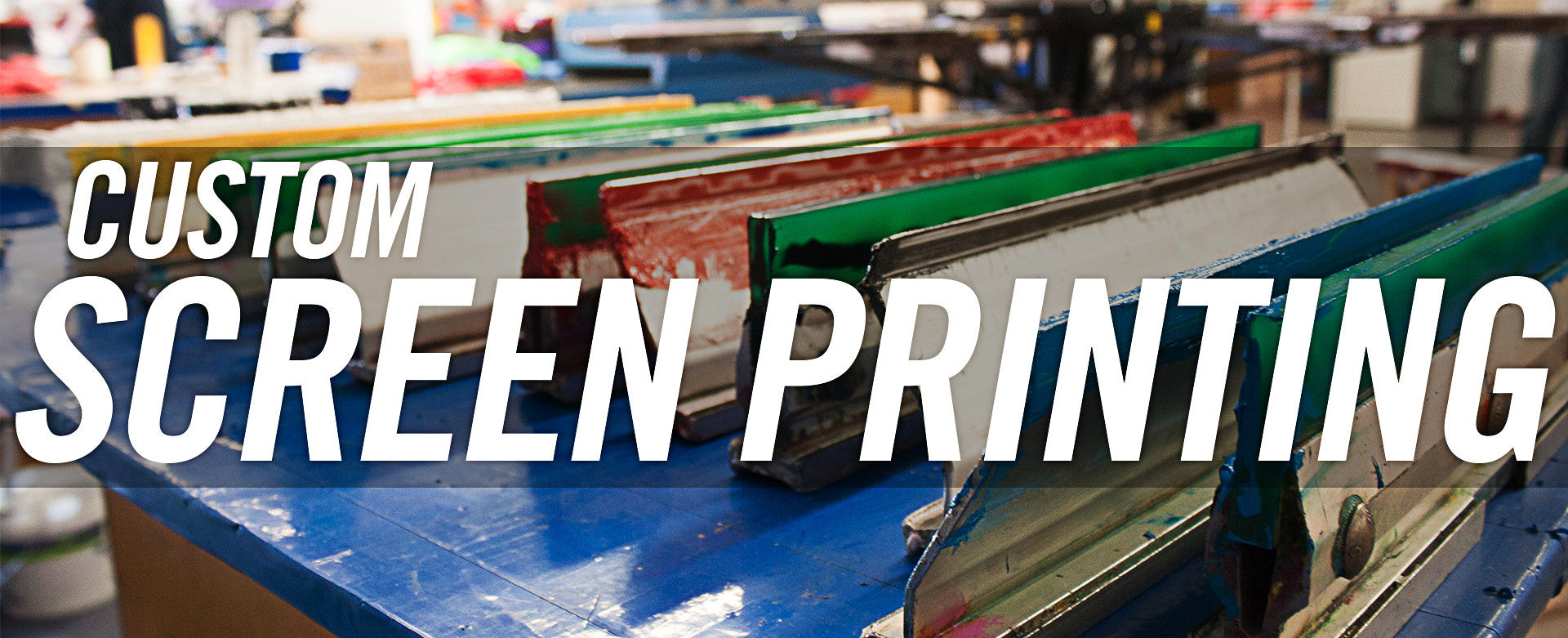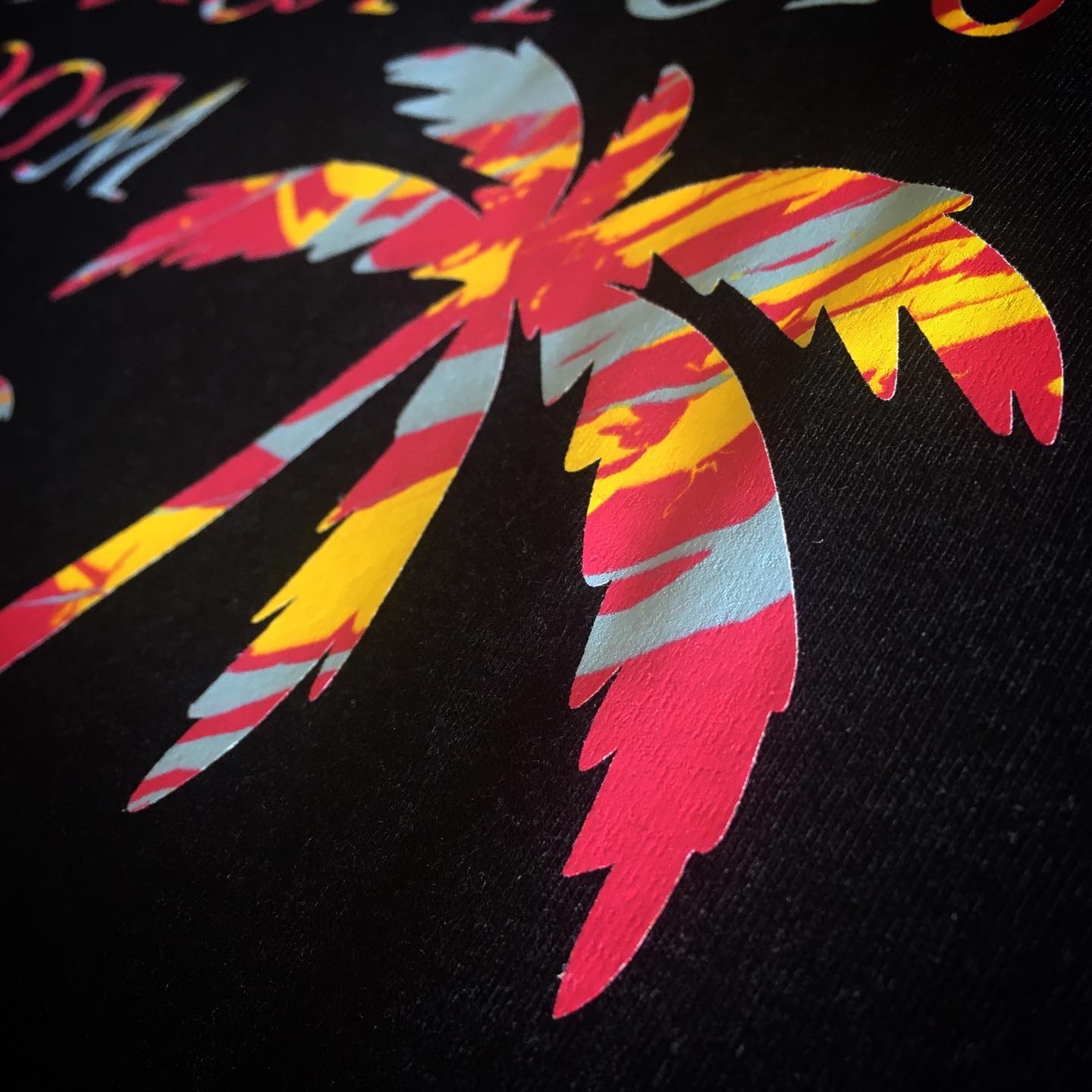High-End Silk Screen Printing for Premium Garments
High-End Silk Screen Printing for Premium Garments
Blog Article
Screen Printing Uncovered: Whatever You Need to Find Out About Tee Shirt and Garment Printing Techniques
Display printing is a fascinating approach that incorporates art with method, providing countless opportunities for imagination. Ready to discover the necessary components that make screen printing an art type?
The Basics of Screen Printing: Just How It Works
When you plunge right into display printing, you'll find it's both a scientific research and an art. At its core, screen printing entails developing a stencil, or display, that enables ink to travel through only in details areas (screen printing kit). You begin by selecting your style and preparing your display with a light-sensitive emulsion. As soon as you subject this emulsion to light, it sets, leaving your style as an adverse area.
Next, you'll mix your inks and prepare your printing surface area. Setting the display over the material, then make use of a squeegee to press ink through the screen onto the garment. This process calls for precision, as you want clear, vivid prints. After printing, you'll cure the ink with heat, guaranteeing it sticks to the material and lasts via laundries. Each action is essential, and grasping them will certainly raise your screen printing skills, changing basic garments into one-of-a-kind, meaningful pieces.
Kinds Of Display Printing Strategies
Once you comprehend the basics of screen printing, it's time to check out the numerous strategies that can elevate your layouts. One preferred approach is conventional display printing, where ink is pressed with a stenciled display. This technique is great for strong, lively shades. Then there's water-based ink printing, which provides a softer feeling and is environmentally friendly, however it requires a different approach to curing.
If you're going for great information, consider discharge printing. This strategy gets rid of dye from the fabric, leaving a soft, classic look. One more option is plastisol printing, recognized for its longevity and brilliant colors, making it a preferred for many brand names. Experiment with halftone printing to create gradient effects and elaborate layouts. Each method has its distinct charm, so don't wait to try them out to locate what fits your style best!
Important Tools for Display Printing
To accomplish sensational cause display printing, having the right devices is basic. First, you'll need a durable screen printing framework, which holds the mesh that moves your layout onto the garment. Next off, purchase top notch squeegees; these are necessary for using ink equally throughout the screen. You'll additionally need a great exposure device to produce your screens, along with a washout cubicle for cleaning them after use. A trusted warmth resource, like a conveyor dryer or warmth press, is critical for curing your prints to assure durability. Do not forget a proper work space, furnished with tables and storage for your supplies. Safety equipment, such as masks and gloves, will maintain you secure from chemicals and inks. With the right tools, you'll be well on your way to producing professional-quality prints.
Picking the Right Inks and Materials
When choosing inks and materials for screen printing, you need to think about the type of ink that functions ideal for your project. Think regarding material compatibility to ensure your styles look terrific and last long. Check out eco-friendly ink alternatives to make your printing procedure more sustainable.
Kinds Of Display Inks
Selecting the right screen ink is important for attaining vibrant, sturdy prints that satisfy your task's requirements. There are a number of kinds of display inks to take a look at. Plastisol ink is preferred for its adaptability and ease of use, giving outstanding color opacity on dark materials. Water-based ink, on the other hand, provides a softer feel and is eco-friendly, making it excellent for those seeking to minimize their ecological impact. Discharge inks eliminate dye from the textile, leading to a soft, classic look yet require details handling. Specialized inks, such as glow-in-the-dark or metallic, can include special effects to your designs. Review your task demands and choose the ink that aligns ideal with your desired outcome.

Fabric Compatibility Factors To Consider
Comprehending material compatibility is essential for accomplishing premium display prints, specifically considering that various materials respond distinctly to various inks. When selecting inks, consider the textile kind-- cotton, polyester, or blends. For cotton, water-based inks work well, providing softness and breathability. Polyester, on the other hand, typically requires plastisol inks for far better bond and vivid colors. You may need to use a combination of both kinds if you're publishing on blends. Constantly examine your inks on sample material to guarantee they stick effectively and keep color integrity. Additionally, remember that fabric weight and texture can influence the last result, so selecting the appropriate ink and product combination is important for your task's success.
Eco-Friendly Ink Options
Eco-friendly inks are becoming a preferred option for screen printers that desire to reduce their ecological influence while keeping quality. When picking inks, think about water-based inks, which are less damaging and much easier to cleanse up contrasted to conventional solvents. These inks bond well with textiles, supplying lively outcomes without toxic chemicals. More Info You could additionally explore eco-solvent inks that utilize less unpredictable natural substances (VOCs), making them a safer option for both your health and wellness and the planet.
In addition, search for inks made from renewable sources, such as soy or vegetable-based alternatives. By picking the ideal inks and materials, you'll not only develop stunning layouts however also add to a more lasting printing procedure. Make the switch, and your prints will certainly mirror your dedication to the atmosphere!
Preparing Your Layout for Display Printing

Submit Format Requirements
To assure your style looks dynamic and sharp on fabric, you'll require to pay close interest to submit layout requirements for display printing. Make sure your design has a transparent background to avoid unwanted white sides on your prints. Keep color modes in mind; CMYK is common for screen printing, so transform your RGB develops appropriately.
Shade Separation Methods
Color separation is a crucial action in preparing your layout for display printing, and understanding it can substantially boost your print high quality. You'll require to damage your style into specific shades, as each color requires a different screen throughout printing. This accuracy not only ensures exact color representation but additionally streamlines the printing procedure.
Resolution and Dimension
Accomplishing the most effective lead to display printing starts with ensuring your design has the best resolution and size. Ideally, your art work needs to go to least 300 DPI (dots per inch) for sharp, clear prints. If you use lower resolution, your last product could look pixelated and unprofessional.
When it involves size, consider the measurements of your print location. Layout your artwork to match the final print dimension, ideally creating it in the real dimensions you'll be publishing. By doing this, you'll prevent any type of unexpected scaling concerns.
Always examine your layout in both vector and raster styles. Vector graphics can be scaled without shedding top quality, making them excellent for display printing. Preparing appropriately will assure your style looks amazing on every garment!
Step-by-Step Display Printing Process
Screen printing is a vibrant procedure that permits you to develop vibrant styles on numerous surface areas. To get going, you'll need a display, emulsion, and your picked ink. Prepare your screen by cleaning it extensively. Next, apply the solution uniformly and let it completely dry in a dark location. Once dry, expose your display to light with your design placed on it, which will harden the solution where the light hits, developing a pattern - reference screen printing kit.
Put ink onto the display and make use of a squeegee to push the ink through the pattern onto the material. Lift the screen thoroughly and allow the print completely dry. You've efficiently display printed your design.
Tips for Effective Screen Printing Projects
While you're diving right into your screen printing projects, bear in mind that prep work is essential to success. Beginning by collecting all your materials-- inks, mops, garments, and screens. A clean office assists prevent unwanted errors, so clean up before you start.
Next, validate your art work is high-resolution and correctly sized for your garment. Test your screen for correct exposure and tidy it thoroughly to stay clear of spots. When blending your inks, adhere to the maker's guidelines to accomplish the appropriate consistency.
Throughout printing, apply also stress with your squeegee for consistent outcomes. Don't hurry; take your time to verify each print satisfies your criteria. After printing, let your garments dry totally prior to dealing with or packaging them.
Finally, always maintain an example of your job for future reference. This method, you can analyze your development and improve your methods gradually. Satisfied printing!

Regularly Asked Inquiries
For how long Does It Require To Set up a Screen Printing Job?
Setting up a display printing task commonly takes around 30 mins to an hour. You'll prepare the screens, mix inks, and adjust journalism. The time differs based upon intricacy and experience, so stay arranged!
Can I Publish on Different Fabric Types Making Use Of the Very Same Method?
Yes, you can print on different textile kinds utilizing the very same technique, yet you'll need to adjust your settings and inks. Some fabrics take in ink in different ways, so exploring warranties the very best results for each product.
What Prevail Errors to Prevent in Screen Printing?
When display printing, prevent common errors like using the incorrect ink, neglecting appropriate exposure times, or avoiding pre-press checks. Always test your arrangement and preserve tidy displays to assure top quality results each time.
How Can I Effectively Clean and Keep My Display Printing Devices?
To properly tidy and maintain your display printing equipment, you should consistently wash displays with appropriate solvents, inspect squeegees for wear, and assure all tools are kept dust-free and completely dry. Uniformity avoids costly repair services and enhances performance.
Is Display Printing Eco Friendly Contrasted to Various Other Methods?
Screen printing can be extra eco-friendly than various other approaches, particularly if you make use of eco-conscious products and water-based inks. By picking lasting materials and techniques, you decrease waste and decrease your impact on the world.
Display Printing Uncovered: Everything You Required to Know Regarding Tee Shirt and Garment Printing Techniques
At its core, screen printing includes developing a pattern, or display, that enables ink to pass with just in details areas. Position the screen over the material, after that make use of a squeegee to press ink via the display onto the garment. One preferred approach is traditional screen printing, where ink is pushed through a stenciled screen.When picking inks and products for display printing, you require to take right into account the kind of ink that functions best for your project.
Report this page